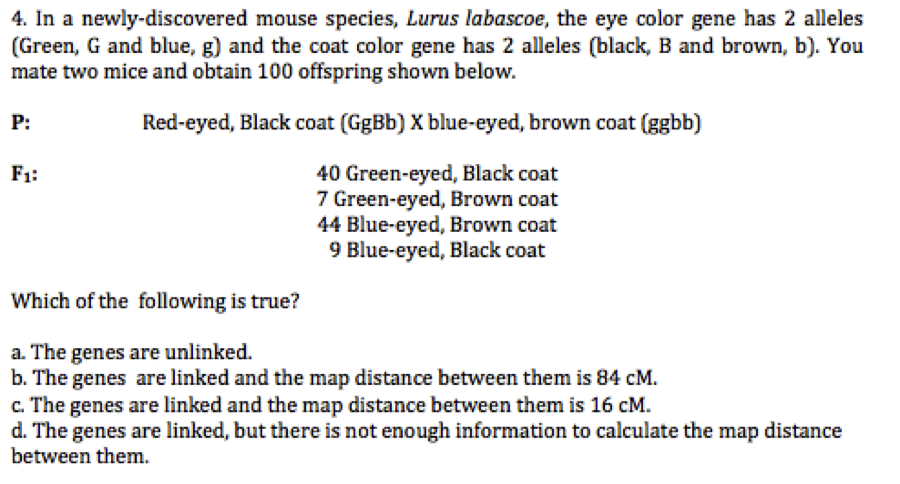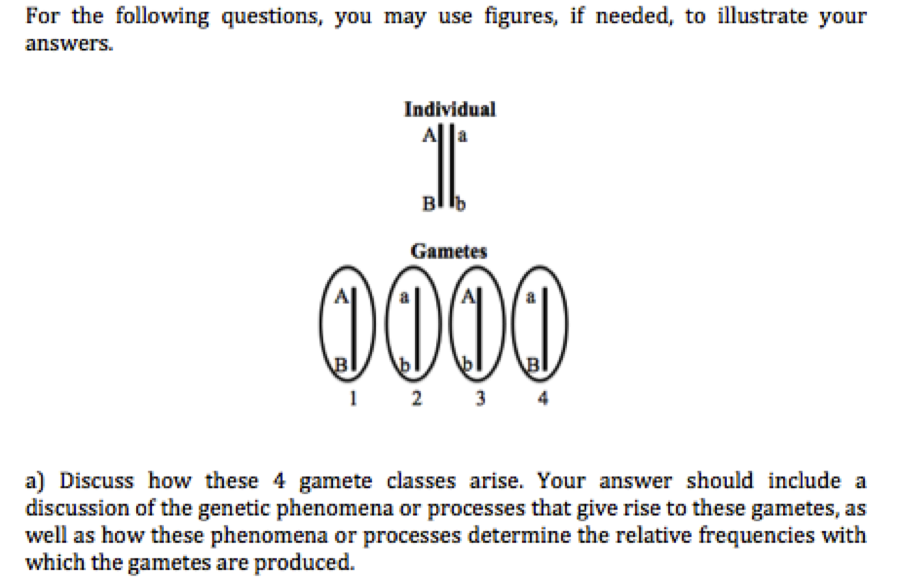BSCI 111b: Introduction to Biological Sciences Laboratory
 Udo Obodo, Biological Sciences, working with Steve Baskauf, Senior Lecturer in Biological Sciences
Udo Obodo, Biological Sciences, working with Steve Baskauf, Senior Lecturer in Biological Sciences
Overview
The participants in this study were students in the Introduction to Biological Sciences Laboratory course (BSCI 111b) at vanderbilt University.
PROBLEM: Historically, students enrolled in the course often demonstrate lack of understanding of difficult Mendelian genetics concept, in particular, the concept of gene linkage. Students’ understanding improve when these concepts are explained using illustrations. However, the use of class time for such explanations is made less feasible by the limited class time and high student-to-instructor ratio. Online learning bypasses both of these problems as learning materials can be made available for students to view anytime and the material can be presented in various formats, including videos. The goal of this study was to determine whether an online module consisting of instructional videos, on Mendelian genetics topics, could be an effective substitute for traditional reading materials.
APPROACH: We developed an online module consisting of four videos, each addressing different Mendelian genetics topics and about 4-9 minutes long. The videos were created to be viewed sequentially; the first video was a review of pertinent Mendelian genetics terminology and the last video addressed the topic of linkage mapping.
Two of the videos contained formative assessment questions at the end of the video. Students were allowed as many attempts as necessary to answer the questions correctly. Shown below is a formative assessment question include in one of the videos.

Approximately 300 students were recruited to participate in the study. Students were randomly divided into a treatment (video) group and a control (traditional reading) group. Videos were made available to students using the library guides platform. Two different web URLs were created, one containing the videos and the other containing traditional reading material. Students in the treatment and control groups were directed to the appropriate URL.
Assessment
- Formative assessment questions were included in some videos and were intended solely for students to assess their understanding of the material.
- Two forms of summative assessment were utilized to assess students’ understanding of the material. At the beginning of the Mendelian genetics laboratory period, students were administered a Reading Assessment Quiz (RAQ) consisting of 6 multiple choice questions. These questions covered all the topics addressed in the videos, including gene linkage. A seventh question was designed to assess the level of students’ adherence to their assigned group, i.e. whether students in the control group watched the videos and vice versa.

Students wrote responses to two short-answer questions about gene linkage.

Results
Students who watched the videos fared better on the more conceptually difficult multiple choice questions.

Shown in the graph above are five of the six multiple choice questions that the students answered. One of the questions was omitted as almost 100% of students in both the treatment and control groups answered the question correctly. The questions are shown in order, from left to right, of increasing conceptual difficulty. There was no significant difference between the control and treatment groups for the first two questions. However, students who watched the videos fared significantly better (p<0.05; Chi-square test) on the last two questions, both of which addressed the most conceptually difficult topic, gene linkage.
The treatment group scored an average of 9% higher on the short answer responses compared to the control group.

The students short answer responses were scored using a grading rubric. Students in the control group scored an average of 52.9% on the short answer questions, whereas students in the treatment group scored an average of 62.1%. Although this difference was modest, it was statistically significant (p=0.0077; Students’ t-test).
Students’ Assessment of the Module

Approximately 76% of the students who watched the video said that the videos were effective learning tools. Interestingly, despite this response, only 44% of the respondents said that more course content should be presented in video format.
.
Conclusions and Lessons Learned
We found that the videos were not only effective substitutes for, but also performed better, than the traditional reading material. Students’ understanding of the topics addressed in the module, as determined by our assessments methods, appeared to have been improved by the videos
We saw modest, but significant, gains in students’ understanding of the topics. Some of the problems that we encountered and that could explain the modest change are:
- Approximately half of the students in the treatment (video) group self-reported during the RAQ that they did not watch the videos. As such, these students’ data were not used in our analysis.
- Some of the students who did report watching the videos may have done so just prior to the genetics laboratory period. These students may not have had enough time to fully understand the topics presented in the videos.
- Finally, anecdotal accounts from some of the students suggests that the students would have preferred videos that were shorter than the combined total (~ 20 minutes) length of the four videos. Therefore, videos that were designed to be watched independently of each other, rather than sequentially, may have been preferable.
